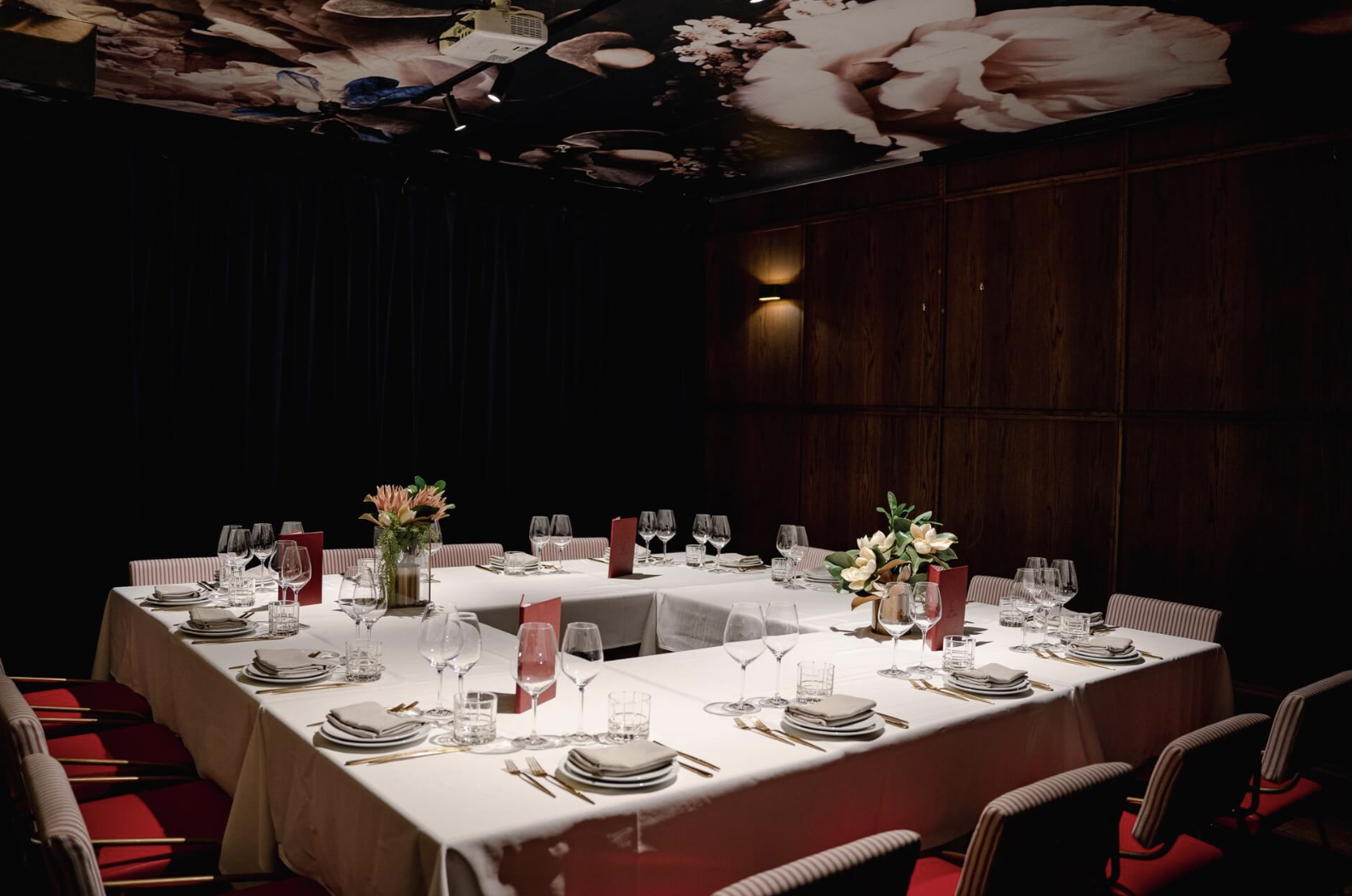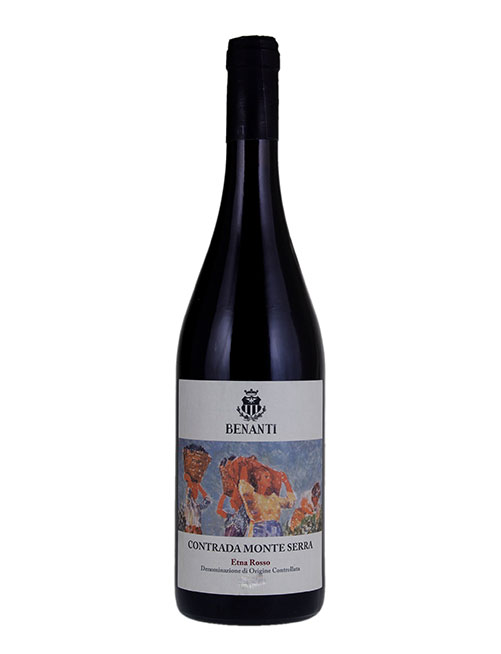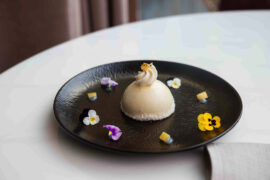
There’s something captivating about the idea of vineyards growing on the slopes of an active volcano, so when we were invited to a tasting of Mount Etna wines, how could we refuse?
On the eastern coast of Sicily, Mount Etna is Europe’s tallest active volcano and one of the world’s most active. Shaped like an inverted C, or a crescent moon, its lower slopes are home to vineyards producing some of Italy’s most exciting wines.
Some of those wines have made their way to Australia and the cellar of Sydney restaurant, Bottega Coco, which we recently had the pleasure of experiencing (see our story here). This stylish restaurant with its enviable cellar holds monthly wine tasting dinners – intimate events held in an upstairs private dining room for around 12 people.
Each month, a different wine appellation is chosen by cellar manager Jon Osbeiston and sommelier Grant Van Every, who you might remember as a presenter on the SBS Television series, The Wine Lover’s Guide to Australia.
With the April event featuring red wines from Mount Etna, it was an opportunity to discover how Mount Etna has become one of the most dynamic wine regions in Italy.
What make Mount Etna wines so unique?
According to cellar manager Jon, it’s a combination of the region’s high elevation, its remarkable range of volcanic soils, and its indigenous varieties that produce robust, dark-coloured reds that are surprisingly delicate and elegant.
Vines have been grown on these slopes for 3,000 years – between eruptions. During the late 1800s, production was flourishing. But by the time the Second World War had come and gone, Sicily was doing it tough.
The modern revival of Mount Etna wines began around the 1980s, and in little more than a few decades, they have become highly regarded and hugely sought after.
Why is altitude so important in wine?
The only way you can achieve fine wines with finesse and delicacy in a climate with long, warm summers like Sicily is to grow the grapes at altitude.
The vineyards on Mount Etna are planted between 300 and 1200 meters. The height cools things down so the days are warm but not super-hot, and the nights are cool so the vines can shut down and have a rest.
With a great diurnal range (the difference between night and day temperatures), Mount Etna wines retain their delicate floral aromatics and a lovely freshness with lots of acidity.
What about the soil?
With Mount Etna constantly doing her thing (the locals refer to the mountain as “she”) and with all that stuff coming up from the middle of the earth, there’s an amazing range of soil profiles in this region.
There are 133 officially recognized contrade and probably just as many different soil types. Contrada (plural contrade) roughly equates to the French cru, or “distinguished site”, although it’s a little more complex as there are social/farming/winemaking considerations that go beyond geology and topography.
Generally, however, the volcanic soils produce robust wines with a mineral flavour and higher levels of tannin, their dark colour making them appear more mature than they are.

Mount Etna’s indigenous varieties
The hero of Mount Etna is an indigenous red variety, Nerello Mascalese. Despite powerful tannins from the volcanic soils, the wines are gracefully “fruit, spice and all things nice” with a rather ethereal quality. Like Pinot Noir, Nerello Mascalese is a sensitive child to grow, and there are a lot of different expressions of it found throughout the region.
Nerello Cappuccio, another indigenous red, is less widely planted and used mostly in blending with Mascalese. All the wines we tasted — all reviewed below — are Nerello Mascalese. Some are blended with a small percentage of Nerello Cappuccio.
As for indigenous white varieties, Carricante grows throughout Sicily, doing best on Mount Etna. It wasn’t included in the tasting but we enjoyed it later in the restaurant.
DNA studies have shown that Nerello is closely related to Sangiovese. Drought-tolerant, vigorous and late ripening, it could potentially do well in Australia. Cuttings have been imported here but commercial crops are still a few years away.
The Mount Etna wines we tasted
2022 Pietro Caciorgna Etna Rosso, $63: This first wine we tasted was the one that divided our table the most. Some loved it; others were less keen. It certainly had the most distinctive aroma – quite funky and herbaceous with passionfruit notes. Made from 70- to 100-year-old vines, it is medium-bodied with rustic tannins and hints of spice on the palate.
2021 Graci Etna Rosso, $63: Floral and fruity on the nose, this one is fermented in large open-top wooden fermenters with indigenous yeasts then matured for two years in big old cement vats. With chalky tannins and flavours of raspberry, redcurrant, and tart cherry, it is fresh and balanced with some lingering spice.
2021 Pietradolce Etna Rosso, $61: Made with relatively brief skin contact (18 days) before being aged for three months in old French oak, this wine is softer and lighter-bodied than many of the region’s reds. Vibrant and easy-drinking, it has bright red fruit flavours, a little citrus and a hint of smokiness (Mount Etna misbehaving?) A good introduction to modern Sicilian reds.

2020 Idda Etna Rosso, $137: This was my pick and I later learnt it was the most expensive of the first four. Trust me, I have a knack for choosing the most expensive. It was the most elegant and subtle of the first four, almost Pinot-like with fine tannins and a velvety texture. It spent two years in barrel and is Nerello Mascalese blended with about 5% Cappuccio. Despite its subtlety, there’s a lot going on in the glass: rose petal aromas, a burst of herbs and spice, a creamy texture, delicious raspberry and black cherry flavours, and a lingering finish. Fittingly, “Idda” in the Sicilian dialect means “she”, and Sicilians use it as a term of endearment for Mount Etna (or perhaps more accurately, an expression of awe).
2021 Girolamo Russo ‘a Rina Etna Rosso, $73: The entry level wine from one of Etna’s most revered producers, this one comes from old bush vines, many of them over 80 years old, grown at an altitude of 650 to 780 metres. Earthy and smokey, it has aromas of licorice, pepper and herbs, and an appealing smoothness. Like the previous wine, it has a small percentage of Nerello Cappuccio.
2020 Benanti Etna Rosso, $69: Benanti is the only winery with vineyards on every slope of the Etna DOC and it is one of its star producers, having been instrumental in the revitalization of the region. It produces organically (although not yet certified) and uses its own indigenous yeast. Its entry level wine is lovely and harmonious with sweet floral hints on the nose, pleasant acidity and lush blackberry and cherry flavours.
2020 Girolamo Russo ‘Feudo di Mezzo’ Etna Rosso, $175: Only 2,200 bottles of this Contrada wine were produced and only a handful have come to Australia. A powerful expression of its terroir, it has chalky/mineral notes, a little saltiness and smokiness, smooth rich tannins, and a brooding intensity. A big eruption in 1979 saw lava coming within 800 metres of the Russo vineyards. There’s nothing like farming on the edge! Russo has a small parcel of pre-phylloxera bush vines that are more than a century old, and this very special wine comes from that.

2021 Benanti Contrada Monte Serra Etna Rosso, $165: Incredibly aromatic and medium- to full-bodied, this stunning wine is grown at an altitude of 450 metres in sandy soil that is rich in minerals and small pumice lava stones. Earthy and savoury, it is fermented in French oak for 12 months, then in stainless steel, and then spends about 10 months in the bottle before being released. Smooth with a lovely acidity and hints of spice, licorice and balsamic, it’s a joy to behold.
With thanks to Bottega Coco for hosting us at its April wine tasting dinner. The tastings are held on the 3rd Wednesday of the month in the restaurant’s private dining room.
More information at www.BottegaCoco.com.au
We can highly recommend the tastings as a great way of getting to know wines you might not otherwise have an opportunity to experience. Pop into Bottega Coco’s impressive cellar if you are looking to buy some of these special wines.
Read our story about Bottega Coco and its autumn menu here.
**Enjoy more of our wine posts and recommendations here.**




